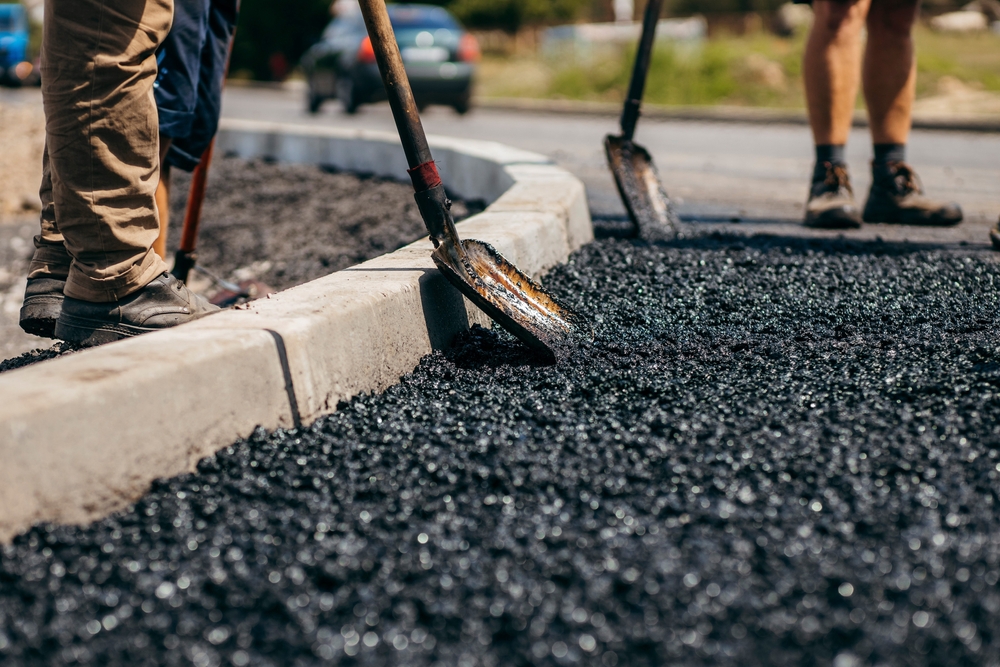
From Preparation to Finish: Understanding Asphalt Installation in Prince Georges County, MD
Asphalt installation is an essential aspect of infrastructure development in Prince George’s County, MD. Whether it’s for residential driveways, commercial parking lots, or public roadways, understanding the asphalt paving process ensures quality results and long-lasting surfaces. In this comprehensive guide, we’ll explore the step-by-step process, preparation requirements, and key considerations for a successful asphalt project.
The Importance of Proper Asphalt Installation
Asphalt paving offers durability, cost-effectiveness, and a smooth surface for various applications. However, improper installation can lead to cracks, potholes, and premature deterioration. Understanding the asphalt paving process ensures that contractors and property owners make informed decisions, resulting in resilient and visually appealing surfaces.
Preparation: The Foundation of a Successful Asphalt Project
Site Assessment and Planning
Every asphalt project begins with a thorough site assessment. Contractors evaluate the existing conditions, including soil stability, drainage, and traffic patterns. This step is critical for identifying potential challenges and determining the scope of work.
Key Considerations During Site Assessment:
- Soil Condition: Stable soil provides a solid foundation for the asphalt layer. If the soil is weak, additional stabilization techniques may be required.
- Drainage: Proper water drainage prevents pooling and water damage to the asphalt surface.
- Usage Requirements: The thickness and design of the asphalt layer depend on anticipated traffic loads.
Obtaining Permits and Compliance
In Prince George’s County, MD, construction projects often require permits to ensure compliance with local regulations. Contractors must obtain the necessary approvals before commencing work, which may include environmental clearances and adherence to zoning laws.
Clearing and Excavation
Once planning and permitting are complete, the site is cleared of vegetation, debris, and existing pavement. Excavation follows, involving the removal of soil to achieve the desired grade and depth for the new asphalt installation.
Understanding the Asphalt Paving Process
Base Preparation
The base layer is crucial for the stability and longevity of the asphalt surface. A well-prepared base prevents issues like shifting and cracking. The process includes:
- Subgrade Compaction: Ensuring the subgrade is properly compacted to support the base.
- Aggregate Installation: A layer of crushed stone or gravel is spread and compacted to create a stable foundation.
- Geotextile Fabric (Optional): Adding geotextile fabric can enhance stability by separating the soil and aggregate layers.
Asphalt Mixing and Transportation
High-quality asphalt is essential for a successful project. Asphalt mix is created by combining aggregates, bitumen, and additives at a designated plant. The mixture must meet specific standards for temperature and composition to ensure proper installation.The hot mix is then transported to the site using insulated trucks to maintain the required temperature.
Laying the Asphalt
The asphalt paving process involves spreading and compacting the hot mix asphalt to create a smooth surface. This step includes:
- Spreading: Asphalt is spread using a paver machine, ensuring even distribution across the surface.
- Leveling: Contractors use specialized tools to ensure the asphalt is leveled according to design specifications.
- Compaction: Rollers compact the asphalt to achieve density and eliminate air voids, ensuring a durable surface.
Finishing Touches
After compaction, the surface undergoes final inspections for imperfections. Edges are smoothed, and any necessary adjustments are made to ensure a seamless finish. The surface is then left to cool and harden.
Post-Installation Considerations
Curing and Setting Time
Asphalt requires time to cure and set properly. While it can typically handle light traffic within 24-48 hours, full curing may take several weeks. During this period, it’s essential to:
- Avoid heavy loads and sharp turns.
- Keep the surface clean and free of debris.
Maintenance Tips
Regular maintenance prolongs the lifespan of asphalt surfaces. Key practices include:
- Sealing: Sealcoating protects the surface from UV damage and water infiltration.
- Crack Filling: Addressing cracks early prevents them from expanding into potholes.
- Cleaning: Removing debris and oil spills prevents staining and deterioration.
Common Challenges and How to Address Them
Weather Conditions
Extreme weather can impact the asphalt paving process. Hot weather accelerates curing, while cold conditions can cause premature cooling of the mix, leading to uneven surfaces. Contractors in Prince George’s County, MD, must monitor weather forecasts and plan accordingly.
Drainage Issues
Improper drainage can lead to water pooling and damage over time. To mitigate this, ensure the installation includes proper grading and drainage systems.
Traffic Load Miscalculations
Underestimating traffic loads can result in premature wear. Contractors must design the asphalt layer thickness based on anticipated usage to ensure durability.
Choosing the Right Contractor
Selecting a qualified contractor is critical for a successful asphalt project. Look for contractors with:
- Experience: Verify their track record in asphalt installation projects.
- Licensing and Insurance: Ensure they hold the necessary licenses and insurance coverage.
- References: Check reviews and ask for references from past clients.
Environmental Considerations in Asphalt Installation
Asphalt paving can have environmental impacts. However, modern techniques focus on sustainability by incorporating recycled materials and reducing emissions. In Prince George’s County, MD, contractors often use eco-friendly practices, such as warm mix asphalt and reclaimed asphalt pavement (RAP), to minimize environmental impact.
Conclusion
Understanding the asphalt paving process is essential for achieving high-quality, durable surfaces. From meticulous preparation to post-installation maintenance, each step plays a vital role in ensuring the success of your project. By partnering with experienced contractors in Prince George’s County, MD, and adhering to best practices, you can enjoy the benefits of a smooth, resilient asphalt surface for years to come.
Need a Paving Contractor in Carroll County, MD?
Established in 2014, Maryland Asphalt LLC has been providing high-quality asphalt and paving services to the areas of Montgomery and Frederick Counties and the surrounding areas. Family owned and operated, we offer quality services at competitive prices. We specialize in commercial and residential asphalt paving and our asphalt services including parking lot maintenance, parking lot repair, commercial driveways, residential driveways, public and private roads, resurfacing, seal-coating and more! Don’t settle for less. The cost of doing it over is more than the cost of doing it right the first time. If you need an expert paver you can trust, call us today.
Categorised in: Asphalt
